Car Sales
2021 Convertibles with Reasonable Prices
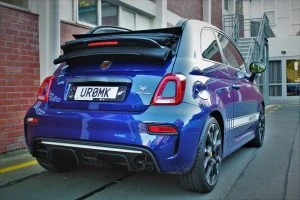
Abarth 595 Convertible
Very cute and not too expensive, the Abarth 595 Convertible has stacks of style and plenty of road presence even though it happens to come in rather small packaging. The Competizione is the more expensive (around $36k) of the two models available but offers more features and more grunt. You have FWD and the weight of the car is only a little over 1000 kg, so the driving experience is dynamic and loads of fun. The 1.4-litre Turbo unleaded petrol engine offers 132 kW and 250 Nm in the Competizione (0-100 km/h in less than 7 seconds, top speed 220k m/h) and 107 kW and 206 Nm in the standard version. Fuel economy sits on average at around 6-to-6.5 litres/100 km. With a 3-year 150,000 km warranty and 3 years roadside assist you are well covered. Expect to pay from around $35k for the base model and $41 k for the Competizione.
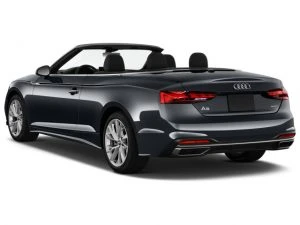
Audi A5 40 TFSI S line
It costs around $96k new, but Audi’s A5 Convertible is top quality and superb to drive. Gorgeous interiors, excellent comfort and technology make this AWD Audi Convertible a very nice ownership prospect. There are two 2.0-litre petrol engines: A very economical mild-hybrid (6.5 litres/100 km) 140 kW/320 Nm version for those who like FWD (0-100 km/h in around 7 seconds), and a smooth and powerful 183 kW/370 Nm version with AWD (0-100 km/h in around 6.5 seconds). Both engines are linked to Audi’s efficient seven-speed S tronic dual-clutch automatic gearbox. To be honest, the AWD version is only a few grand more at a bit over $100k, so I’d be looking to get into this one. Both versions should return between 6 and 7 litres/100km. A 3 year unlimited km warranty is good, as too the 3 year roadside assist package.
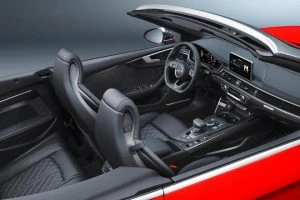
Audi S5 Convertible
Like the Audi A5 convertibles above, the S5 has all the goodies, gorgeous lines and comfortable interiors with all the modern gadgets. The S5 has the awesome 3.0-litre turbo V6 Petrol delivering a potent 260 kW of power and 500 Nm of torque to the AWD system, and it uses an eight-speed Tiptronic transmission. You can scamper from a standstill to 100 km/h in around 5 seconds, while the top speed is limited to 250 km/h. A 3 year unlimited km warranty is good, as too the 3 year roadside assist package. Expect to pay around $135k for a new one of these.
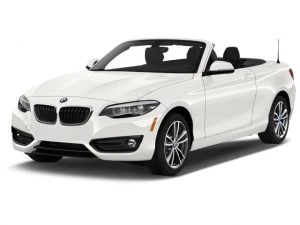
BMW 2 Series Convertible
The BMW 220i Luxury Line and 220i M Sport convertibles use the same 2.0-litre Turbo powerplant with 135 kW of power and 270 Nm of torque. The eight speed sport automatic does a great job of providing quick gear changes while linking the smooth operative action to the optimum power levels. This engine should offer a combined fuel consumption of around 6.5 litres/100 km. The car rides nicely. Those wanting the best in comfort and equipment will go for the Luxury Line, while the M Sport concentrates the suspension more towards sport and the flavour a bit racier. BMW The 220i M Sport uses the performance 3.0-litre Turbo engine with 250 kW of power and 500 Nm of torque. This is a quick car and you can expect a run through the 0-100 dash to take less than 6 seconds. The car’s top speed is limited to 250 km/h, while average fuel consumption will be around 8 litres/100 km. All BMW 2 Series convertibles are RWD and offer premium quality interiors and technology. Prices start at around $65k for the Luxury Line, $68k for the M Sport 2.0-litre and $92k for the 3.0-litre M Sport.
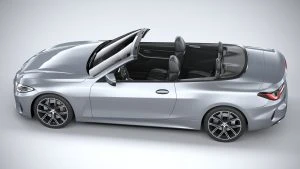
BMW 4 Series Convertible
This is one of the prettiest convertibles available for 2021. The new BMW 4 Series Convertible is offered with a 2.0-litre turbo-petrol four-cylinder producing either 135 kW/300 Nm (420i, around $90k) or 190 kW/400 Nm (430i, around $108k); while the flagship M440i xDrive AWD (around $136k) variant uses a mild-hybrid 3.0-litre inline turbo-six that unleashes 285 kW/500 Nm and is capable of reaching 100km/h in 4.5 seconds. A 3 year unlimited km warranty along with 3 year roadside assist makes life easy. All are well equipped, comfortable and stylish cars.

BMW Z4 Convertible
Another gorgeous looking convertible is the latest Z4 two-seater Convertible Roadster, which has a lower centre of gravity than before and is further helped dynamically by a 50-50 weight distribution. Three engines are available: The BMW Z4 sDrive 20i M Sport has the 145 kW/320 Nm 2.0-litre; the BMW Z4 sDrive 30i M Sport uses the 190 kW/400 Nm upgraded 2.0-litre version; the BMW Z4 40i offers 250 kW and 500 Nm with its 3.0-litre turbo in-line six petrol. Prices are around $98k, $122k and $144k, respectively. Even the 145 kW engine sings sweetly and packs a punch. All handle beautifully, making this the best Z4, yet. This has to be one of the best looking Roadsters on the road, and they are delightful to drive. The Z4 40i can dispatch the 0-100 km/h dash in just 4 seconds. A 3 year unlimited km warranty along with 3 year roadside assist is available to new car buyers.
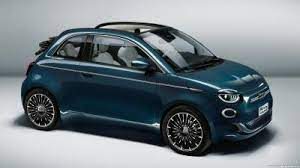
Fiat 500C
For somewhere between $25k and 28k, you could get yourself into a brand new Fiat 500 Convertible. They boast a 5-star ANCAP safety rating for what is a very cute, small car. In case you weren’t aware, the Abarth models, mentioned above, are the performance based versions of the Fiat 500C. You should average even less than 5 litres/100 km at times, and the 1.2-litre ULP motors are free revving, fun and relatively refined. Weighing in at just 935 kg these have a bit of zip about town and will happily hold their own at the legal open road limit. Both the 500C Club and 500C Lounge are well kitted out with modern technology and practicality, so life with a small 500C brings plenty of smiles. A 3 year 150,000 km warranty and 3 year roadside assist is good piece of mind motoring.
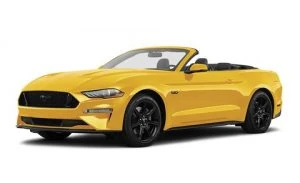
Mustang Convertible
Here would be the coolest convertible on the market. The Mustang’s muscle, sound and power delivery is nothing short of amazing. The GT version (0-100 km/h in around 4.5 seconds) costs around $75k new and boasts a 339 kW/556 Nm 5.0-litre V8. It can be had with either the standard six-speed manual, or the optional 10-speed auto gearbox. For around $61k, the Mustang High Performance 2.3-litre four-cylinder still delivers on performance (0-100 km/h in around 5.5 seconds) and has 236 kW of power and 448 Nm of torque to play with. Manual and auto versions are also available for the 2.3 High Performance. Both versions are RWD and are immensely rewarding to drive with the top up or down. These are hard to beat for value, performance and road presence. You can’t argue with the 5 year/unlimited km warranty, either.
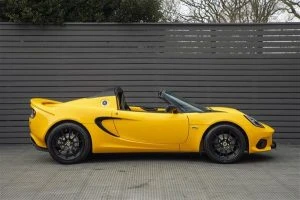
Lotus Elise
Here is another very cool convertible. The strikingly stylish Lotus Elise Convertible offers two models for 2021. The Sport 220 offers a 1.8 litre, 162 kW, 250 Nm ULP engine with RWD and a six-speed manual gearbox. A 0-100 km/h sprint for this version takes around 4.9 seconds. The Lotus Elise Cup 250 offers a 1.8 litre, 183 kW, 250 Nm ULP engine with RWD and a six-speed manual gearbox. A 0-100 km/h sprint for this version takes around 4.7 seconds. Few other convertibles cars can keep up with a Lotus Elise around a tight track as they are so light, agile and fast. A 3 year unlimited km warranty links with a 3 year roadside assist package when you buy a new one of these, which will be a little north of $100k.
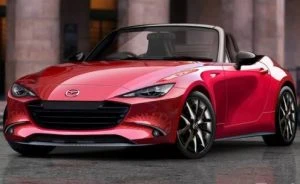
Mazda MX-5
There are two engines available: The 97 kW/152 Nm 1.5-litre and the 135 kW/205 Nm 2.0-litre, both offering the choice of six-speed manual or automatic transmission and RWD. A limited-slip differential and a finely-tuned suspension ensure a superbly balanced and grippy chassis with plenty of fun in the sun a certainty. Expect to pay between $40 and $52k depending on the model and trim. Enjoy! This has become a roadster icon over the years, and the latest model looks sharp and is kitted with all the latest safety gear.
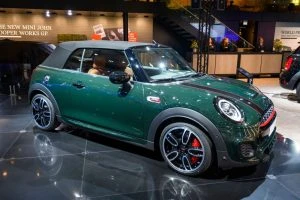
Mini Convertible
You’re paying anywhere around $50k-and-$75k for a new Mini Convertible – it all depends on the model. They can be had with various engines and styles. Three-door models include the base 100 kW/220 Nm 1.5-litre three-cylinder Cooper, the 141 kW/280 Nm four-cylinder Cooper S, and the mighty 225 kW/450 Nm JCW. Always cool and always impressively well-built, Mini’s are a classic. JCW versions are insanely fast and capable, and all come with 3 year/unlimited km warranty and a 3 year roadside assist package.
You could also look at some other marques like Porsche, Jaguar, Mercedes Benz or Lexus when it comes to buying a new convertible but you’ll be paying well north of $100, $200k or even $300k for some of these. Aston Martin, Bentley, Ferrari, Lamborghini, McLaren and Rolls Royce also offer convertible options in Australia, however their prices are for those loaded with money.
Honda’s Fixed Prices Set to Cause a Stir
After a long time coming, Honda is almost ready to pull the trigger on its plans to move towards an agency model in the Australian new car market from July. For a long time, the brand’s future was subject to speculation as some wondered whether it might follow in the footsteps of Holden and exit the local car market.
Nonetheless, despite its commitment to Australian motorists, not everyone is particularly pleased about how things are about to unfold. Let’s take a look at some of the changes that motorists can expect when the new model comes into effect from mid-year.
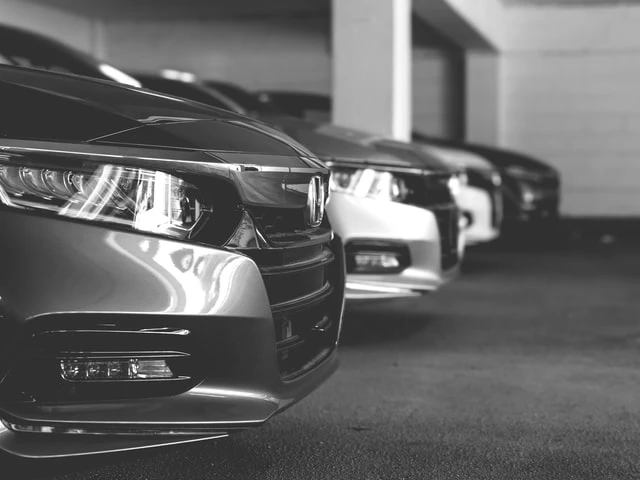
What can new car buyers expect?
As of July 1st, 2021, Honda is slashing dealership numbers and adopting an agency model. To many, this may not mean anything, however, for the dealers involved, the first thing is an expected hit to jobs, particularly given the lower number of showrooms and staffing requirements that ensue.
When you enter a showroom from July 1, you will be dealing with an agent of the Honda company’s head office. So whereas showrooms and dealerships were often operated by separate groups, now you’ll effectively be liaising directly with the parent company, although stock will be held by Honda Australia. Dealer agents will no longer be commission-based, rather, they will earn a fee from the parent company.
Because of these changes, however, prices are set to be fixed. That’s right, you heard it correctly. The days of haggling in a Honda showroom are set to be over, with the brand’s representatives recently even going so far as to say that negotiating the price of a Honda vehicle would no longer be a thing under any circumstances whatsoever.
If that wasn’t enough, new car buyers are also staring at reduced choice when it comes to the number of models available from Honda. The brand has cut its entry-level numbers and is prioritising SUVs, which is in line with the trend favouring SUVs of late.
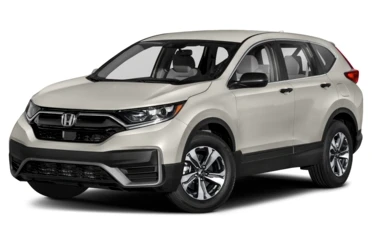
What is the impact of this move?
Aside from the obvious, higher prices and less choice, the story isn’t over for new car buyers. There is also going to be more restricted levels of accessibility when it comes to servicing your Honda, which comes from the fact that a large number of Honda dealerships are set to fall by the wayside.
For Honda, naturally, its margins are expected to increase – and we’re tipping, quite handsomely. However, the brand has also gone on record to say that it not only expects but is ultimately pleased about the prospect that it will sell fewer vehicles across the Australian new car market.
A long-time favourite down under, and with many great names behind it over the years, it’s a shame that motorists now face an outcome where their choice, negotiating power and after-market support are set to be constrained.
FCAI Sees Tunnel’s Light As Sales Increase
The Federal Chamber of Automotive Industries, the FCAI, has released the new vehicle sales figures for February 2021. 83,977 vehicles were sold in February 2021, which is up 5.1 per cent on February 2020. Sales for that month saw 79,940 vehicles sold.
This positive result was reflected in the increases seen for N.S.W., W.A., S.A., QLD, and the N.T. Victoria was down by 8.7%, Tasmania by 3.9%, and the ACT by 38.3% compared to February 2020. Year to date sales of 163,643 vehicles is up 7.9 per cent on the same period in 2020.
SUV sales continued to dominate the market with sales of 42,651 vehicles and representing 50.8 per cent of the total market for February 2021. Light commercial vehicle sales represented 23 per cent (19,326) and passenger vehicles 22.9% (19,194).
On a marque basis, Toyota had a 21.9% market share, Mazda 9.9%, Hyundai 7.4%, equal with Mitsubishi and just ahead of Kia, and Ford on 7.0%, and 5.6%. Nissan clocked 4.6% with fellow Japanese maker Subaru on 3.1%. VW had 3.6 whilst Chinese owned and built MG also saw 3.6%. February sales saw a continued shift in preference by buyers to move away from passenger vehicles. Sales fell 15.3% in February 2021 compared to sales in February 2020. Sales of SUVs were up 8.6 per cent and sales of light commercials were up 24.3 per cent. Hybrid SUVs continue their inexorable climb, with 2,713 sold in February 2021, against 2,546 for the same period last year, and 5,456 from January 1st compared to 4,018 last year. PHEV sales were also up, with 149 and 275 against 92 and 149 on a month and year to date basis.
February sales saw a continued shift in preference by buyers to move away from passenger vehicles. Sales fell 15.3% in February 2021 compared to sales in February 2020. Sales of SUVs were up 8.6 per cent and sales of light commercials were up 24.3 per cent. Hybrid SUVs continue their inexorable climb, with 2,713 sold in February 2021, against 2,546 for the same period last year, and 5,456 from January 1st compared to 4,018 last year. PHEV sales were also up, with 149 and 275 against 92 and 149 on a month and year to date basis.
Toyota’s RAV4 lead the way in the category, with 2,750 against the Mazda CX-5’s 2,048. It was a scrap for third place with Mitsubishi’s Outlander (1,178), Nissan’s X-Trail (1,151), Hyundai’s Tucson (1,062) and Subaru’s Forester (1,009) duking it out. In the large SUV category and at sub-$70K, Toyota’s Prado won comprehensively with 1,407. Isuzu’s MU-X saw 745 sales for 2nd place, edging the outgoing Subaru Outback on 608. FCAI chief executive, Tony Weber, said the result showed that confidence was continuing to grow in the market. “During the past four months we have seen an increase of 10.6% in new vehicles and this has been reflected with strong growth in NSW, Queensland, Western Australia, South Australia and the Northern Territory in February 2021. The sales reduction in Victoria can be attributed to the COVID 19 restrictions that were put in place during the month.“We remain confident that this trend of growth will continue in an environment where business operating conditions continue to normalise.”
FCAI chief executive, Tony Weber, said the result showed that confidence was continuing to grow in the market. “During the past four months we have seen an increase of 10.6% in new vehicles and this has been reflected with strong growth in NSW, Queensland, Western Australia, South Australia and the Northern Territory in February 2021. The sales reduction in Victoria can be attributed to the COVID 19 restrictions that were put in place during the month.“We remain confident that this trend of growth will continue in an environment where business operating conditions continue to normalise.”
Toyota was the leading brand in February with sales of 18,375 vehicles (21.9 per cent of the market), followed by Mazda with 8,322 (9.9 per cent), Hyundai with 6,252 (7.4 per cent), Mitsubishi with 6,202 (7.4 per cent) and Kia with 5,871 (7 per cent).
The Toyota Hilux was the best-selling vehicle in February 2021 with sales of 4,808 vehicles, followed by the Ford Ranger (2,900), the Toyota RAV4 (2,750), the Toyota Landcruiser (2,521) and the Toyota Corolla (2,427).
Kia’s revamped Carnival continued to dominate the People Mover sub-$60K segment, with 606 sales for a massive 62.5% market share, with Honda’s Odyssey on just 127. Mercedes-Benz listed 28 in the plus-$60K market for the V-Class. Purely electric passenger vehicles have seen a mild increase, with 119 for February 2021 against 86 for the same time in 2020. It’s the same on a YTD basis with 197 to 165 for 2020. For the electric SUV segment, it was a better result, with 139 to 60 for a month comparison, and 352 to 97 on a YTD basis.
Purely electric passenger vehicles have seen a mild increase, with 119 for February 2021 against 86 for the same time in 2020. It’s the same on a YTD basis with 197 to 165 for 2020. For the electric SUV segment, it was a better result, with 139 to 60 for a month comparison, and 352 to 97 on a YTD basis. Key Points:
Key Points:
• The February 2021 market of 83,977 new vehicle sales is an increase of 4,037 vehicle sales or 5.1% on February 2020 (79,940) vehicle sales. February 2020 and February 2021 each had 24 selling days and this resulted in an increase of 168.2 vehicle sales per day.
• The Passenger Vehicle Market is down by 3,466 vehicle sales (-15.3%) over the same month last year; the Sports Utility Market is up by 3,378 vehicle sales
(8.6%); the Light Commercial Market is up by 3,784 vehicle sales (24.3%); and the Heavy Commercial Vehicle Market is up by 341 vehicle sales (13.8%) versus
February 2020.
• Toyota was market leader in February, followed by Mazda and Hyundai. Toyota led Mazda with a margin of 10,053 vehicle sales and 12.0 market share points.
(Information courtesy of FCAI)
January 2021 Sales Figures Show Upwards Swing
Australia’s Federal Chamber of Automotive Industries has released the sales figures for January of 2021. A total of 79,666 vehicles were sold in January 2021 which is up by 11.1 per cent on January 2020. 71,731 vehicles were sold in that month. Every state and territory saw an increase, and following on from December 2020, with the Northern Territory seeing the highest increase of 38.7% to just 1.9% in Victoria. Private buyers contributed by having an increase of 25.4%. Business buyers decreased, but by only 1.3% whilst government and rental sales dropped by 11.2% and 12.4%.
Of note was that Holden as a brand registered zero sales.
The private sales had the passenger vehicle category down by 9.3% compared to January 2020, with SUVs rising by 17.4%. Light Commercial Vehicles jumped by 24.6%. Toyota lead the way in January 2021 with 16,819 vehicles (21.1%) with HiLux 3,913 of those. Mazda was 2nd overall on 8,508 with 10.7% market share. Hyundai saw 5,951 new vehicles sold for a 7.5% share and Kia on 5,500 units for 6.9%. Mitsubishi backed up with 5,179 units and took a market share of 6.5%. Ford’s Ranger was the 2nd highest seller behind the HiLux, moving 3,120 units, just ahead of the RAV4 with 3,066 whilst the LandCruiser sold 2,388 units. Mazda’s CX-5 had 2,081 units find new homes.
Ford’s Ranger was the 2nd highest seller behind the HiLux, moving 3,120 units, just ahead of the RAV4 with 3,066 whilst the LandCruiser sold 2,388 units. Mazda’s CX-5 had 2,081 units find new homes.
The FCAI chief executive, Tony Weber, said: “During the past three months sales had increased by 12.4 per cent compared to the corresponding period twelve months earlier. The January sales numbers are indicative of positive consumer confidence in the domestic economy. With attractive interest rates and a range of other economic indicators encouraging consumption, we hope to see this trend in new vehicle purchasing continue through 2021.”
Toyota was the leading brand in January with sales of 16,819 vehicles (21.1 per cent of the market), followed by Mazda with 8,508 (10.7 per cent), Hyundai with 5,951 (7.5 per cent), Kia with 5,500 (6.9 per cent) and Mitsubishi with 5,179 (6.5 per cent).
The Toyota Hilux was the best-selling vehicle in January 2021 with sales of 3,913 vehicles, followed by the Ford Ranger (3,120), the Toyota RAV4 (3,066), the Toyota Landcruiser (2,388) and the Mazda CX5 (2,081).
In the Micro Car segment, the Kia Picanto continued to dominate in a three car field. The Fiat Abarth and Mitsubishi Mirage are the other two, and sold 49 and 56 respectively, way off the 573 of the Picanto. In the light car category, Chinese owned MG scored gold with 859, outclassing the Suzuki Swift (562), Volkswagen Polo (526) and the Toyota Yaris (486). Moving to the Small Cars, and Toyota’s Corolla moved 2,062, Just clearing the revamped Hyundai i30 on 1,952. 3rd was a tight tussle, with the Kia Cerato emerging as the winner over the Mazda3, on 1,545 to 1,501.
In the light car category, Chinese owned MG scored gold with 859, outclassing the Suzuki Swift (562), Volkswagen Polo (526) and the Toyota Yaris (486). Moving to the Small Cars, and Toyota’s Corolla moved 2,062, Just clearing the revamped Hyundai i30 on 1,952. 3rd was a tight tussle, with the Kia Cerato emerging as the winner over the Mazda3, on 1,545 to 1,501.
Medium cars and sub-$60K, and Toyota’s big Camry blew the opposition away on 815. Subaru’s Liberty was 2nd on 183. Skoda and there Octavia took bronze on 153, ahead comfortably of the Mazda6 with 114.
Large cars and there’s really only one contender now, Kia’s Stinger on 147, 99 units ahead of the Skoda Superb.
People movers and Kia’s Carnival moved 442, thumping the Hyundai iMax and Honda Odyysey, both on 67. Moving into Sports Cars and the Mustang said hello to 361 new homes, well ahead of Mazda’s MX5 and Hyundai’s soon to be discontinued Veloster, on 53 and 45.
For the Light SUVs sector, Mazda’s CX-3 absolutely dominated with 1,344. Toyota’s new SUV based on the Yaris, the Yaris Cross, moved an impressive 541, just edging out the slightly older VW T-Cros on 494.
In the Small SUV sector, another close battle here and it was 25 units separating the Mitsubishi ASX (1,278) to the MG ZS (1,253). Hyundai’s run-out Kona was the only other to crack the 1,000 with 1,091. It’s been updated and available for sale from February.
RAV4 and Mazda CX-5 duked it out for the Medium SUV segment, with 3,066 to 2,081. 4rd was Nissan’s X-Trail on 1,593, clear of Hyundai’s Tucson on 1,206. Go large and it was Toyota’s Prado on 1,259, ahead of Kia’s recently updated Sorento on 745. Mazda’s in-betweener, the CX-8, saw 571, tying with Hyundai’s Santa Fe. In the upper large, Toyota’s LandCruiser outclassed its opponent, Nissan’s Patrol, with 1,499 to 241.
Inside the ute/pick-up segment, the HiLux in both 4×2 and 4×4 continued its dominance. In two wheel drive guise it more than doubled the Isuzu D-Max, with 823 to 406. Ford’s Ranger was 3rd on 318. In the 4WD sector it was 3,090 to Ranger’s 2,802. In 3rd was Mitsubishi’s Triton, edging the D-Max on 1,416.
Petrol is still the clear winner in preferred fuels, with just 32 PHEVs, 78 EVs, and 1,915 Hybrids moving in the Passenger segment. In the SUVs, 30,062 petrols moved in comparison to diesel with 7,811, PHEV on 126, EV on 213, and Hybrids at 3,332.
On a country of manufacturing basis, Japan was the leader at 29,275, with Korea on 11,516. Thailand and their ute/pickup manufacturing shone at 16,903, and Chinese made vehicles rose to 4,198. This puts the brands sold from Chinese manufacturing into 4th overall.